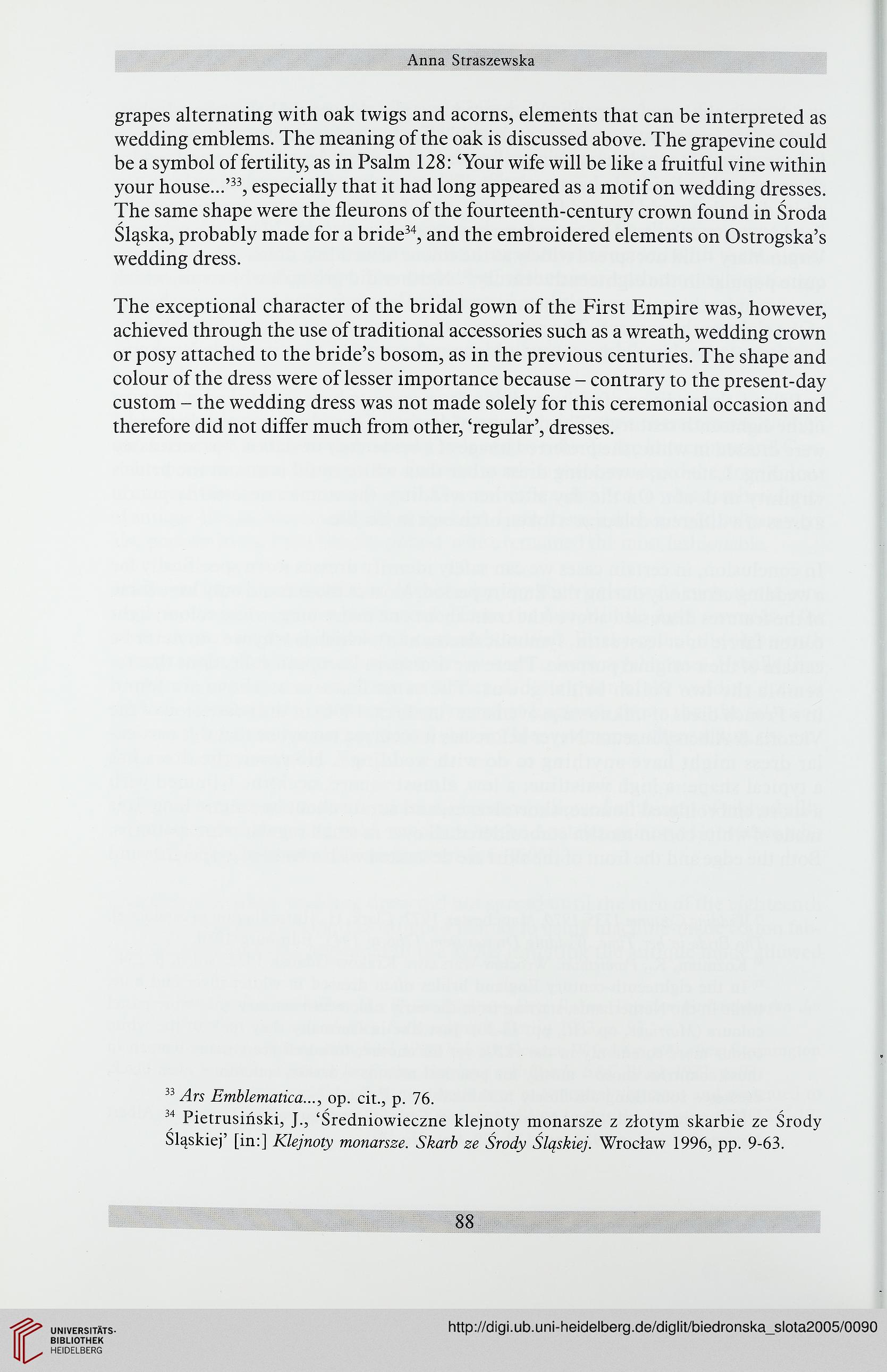Anna Straszewska
grapes alternating with oak twigs and acorns, elements that can be interpreted as
wedding emblems. The meaning of the oak is discussed above. The grapevine could
be a symbol of fertility, as in Psalm 128: 'Your wife will be like a fruitful vine within
your house...'33, especially that it had long appeared as a motif on wedding dresses.
The same shape were the fleurons of the fourteenth-century crown found in Środa
Śląska, probably made for a bride34, and the embroidered elements on Ostrogska's
wedding dress.
The exceptional character of the bridal gown of the First Empire was, however,
achieved through the use of traditional accessories such as a wreath, wedding crown
or posy attached to the bride's bosom, as in the previous centuries. The shape and
colour of the dress were of lesser importance because - contrary to the present-day
custom - the wedding dress was not made solely for this ceremoniał occasion and
therefore did not differ much from other, 'regular', dresses.
33 Ars Emblematica..., op. cit., p. 76.
34 Pietrusiński, J., 'Średniowieczne klejnoty monarsze z złotym skarbie ze Środy
Śląskiej' [in:] Klejnoty monarsze. Skarb ze Środy Śląskiej. Wrocław 1996, pp. 9-63.
grapes alternating with oak twigs and acorns, elements that can be interpreted as
wedding emblems. The meaning of the oak is discussed above. The grapevine could
be a symbol of fertility, as in Psalm 128: 'Your wife will be like a fruitful vine within
your house...'33, especially that it had long appeared as a motif on wedding dresses.
The same shape were the fleurons of the fourteenth-century crown found in Środa
Śląska, probably made for a bride34, and the embroidered elements on Ostrogska's
wedding dress.
The exceptional character of the bridal gown of the First Empire was, however,
achieved through the use of traditional accessories such as a wreath, wedding crown
or posy attached to the bride's bosom, as in the previous centuries. The shape and
colour of the dress were of lesser importance because - contrary to the present-day
custom - the wedding dress was not made solely for this ceremoniał occasion and
therefore did not differ much from other, 'regular', dresses.
33 Ars Emblematica..., op. cit., p. 76.
34 Pietrusiński, J., 'Średniowieczne klejnoty monarsze z złotym skarbie ze Środy
Śląskiej' [in:] Klejnoty monarsze. Skarb ze Środy Śląskiej. Wrocław 1996, pp. 9-63.





